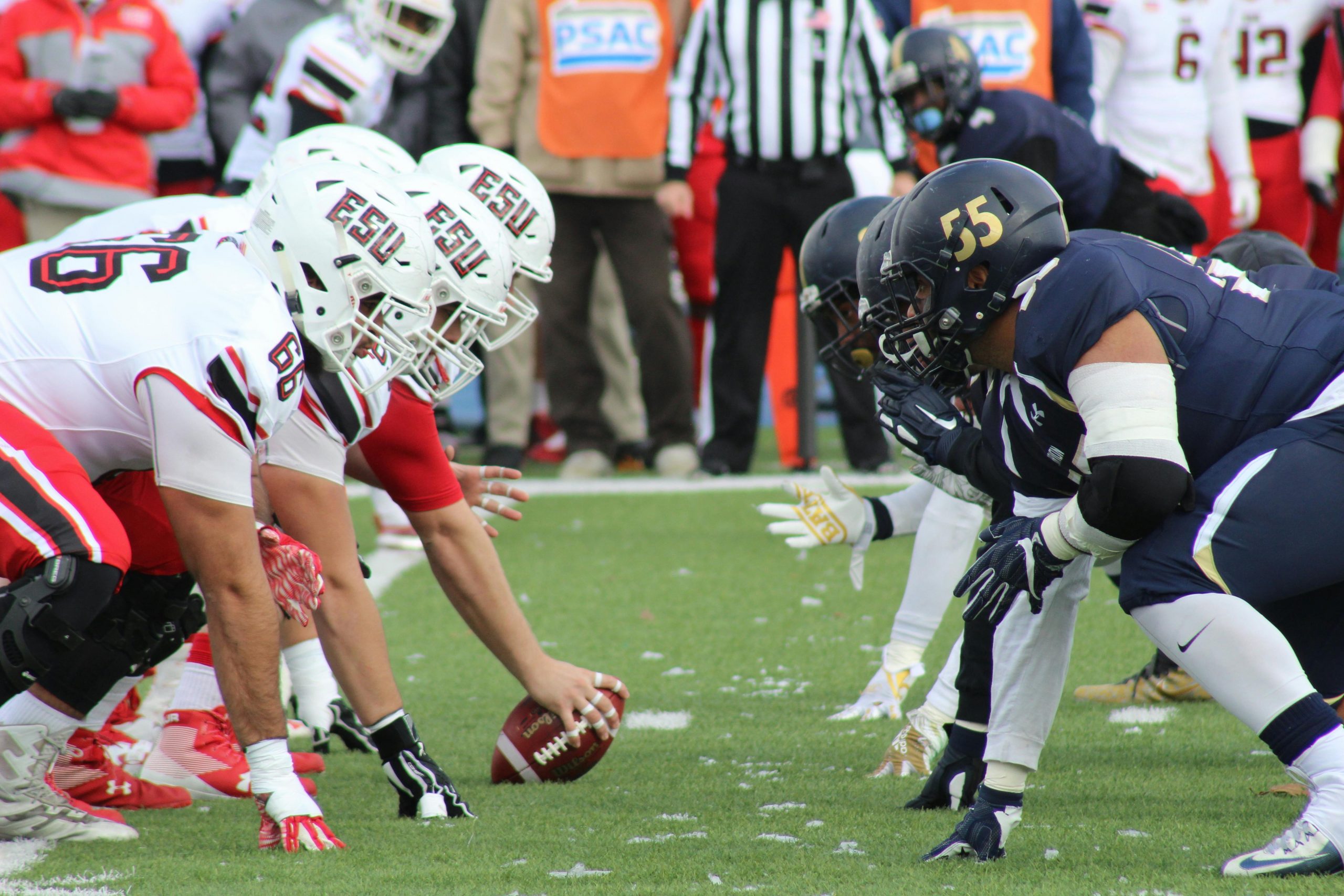
UK Universities with the Best Football Training Grounds
August 12, 2024 1:35 pm Leave your thoughtsThere could be no more apt metaphor for the national sport of the UK than football. It’s a lifestyle, not just a sport for more than a few undergraduates who see university as the domain of their sporting dreams.
To play professional football is a career aim shared by many young people, and while academic excellence plays an important role in their education one could say that a lot also depends on the facilities for top-level football.
For its part, university provides the perfect ambience to hone skills and make that sporting dream a reality. UK universities with the best football training grounds offer exceptional opportunities for aspiring athletes, making it crucial to perfect your admission essay writing UK to secure a spot. UKWritings.com can provide expert help in writing an admission essay that highlights your passion for both academics and sports.
In this post, we have picked out some of the best universities in the UK which enjoy the best facilities for football training.
The Importance of Quality Training Facilities
That is why quality training facilities are so vitally important before we even look at specific universities. Football at the highest level demands explosive physical fitness, but also the finest technical ability and tactical intelligence. The best training grounds provide the equipment and environment to develop in these areas.
Innovative pitches (synthetic as well as grass ones) guarantee that training takes place whatever the weather, while the modern indoor facilities allow players to hone their skills throughout most of the year. Gyms fitted with state-of-the-art sporting equipment help players develop strength and stamina, while recovery areas with physiotherapy rooms and hydrotherapy pools help to prevent injuries and speed up rehabilitation.
In addition, they’re likely to be equipped with high-quality coaching staff and powerful performance analysis tools. And so, by being available to amateurs, they provide facilities that might take them to a professional level.
Loughborough University: A Footballing Powerhouse
UK universities with the best football training grounds often provide comprehensive support for student-athletes, and using dissertation writing services can help balance academic demands with your sporting commitments.
If you look at the lists of sports facilities in UK universities, you will probably find Loughborough University on top. This is hardly surprising. The university’s football training grounds include several full-size pitches, including a FIFA-certified artificial turf and several grass pitches of professional quality.
The Paula Radcliffe Athletics Centre. Loughborough’s football facilities are managed by a £15 million centre adjoining the Sir Alex Ferguson sports centre and home to the university’s Sport Technology Institute.
Despite its name, the centre’s indoor athletics track is the main attraction, but it also has Commonwealth-sized swimming pools, gymnasia, and – the most relevant part for us, at least in principle – football-specific skills zones for technical work and game areas for small-sided games on tactical development.
Loughborough’s off-pitch commitment to football excellence extends to a sports science department that is recognised as one of the best in the world; one that players can utilise the facilities and expertise in biomechanics, nutrition and performance analysis.
For those who are interested in sports betting alongside their love for football, it’s worth exploring top Czech bookmakers that offer competitive odds and various sports markets.
University of Bath: Blending Academia and Athletics
The university of Bath has long prided itself on combining academic and sporting success, and its football training facilities reflect this. The university’s Sports Training Village is a centre for all kinds of athletic activity, with football very much at the heart of it.
The football pitches at Bath are kept to a high standard that you would expect to find at a professional club. The university also has indoor pitches for use in all seasons. There are also specialist high-performance gyms for strength and conditioning work.
What happens in Bath with its football training, however, is that sports science plays a far more enhanced role than it does elsewhere. The players can get biomechanical analysis of their technique to further refine it and minimise risk of injury.
Meanwhile, the sports psychology department feeds into the football programme, with psychologists helping players to get to grips with the psychological demands of playing at the highest level.
Durham University: A Rising Star in University Football
Whilst Durham University is more widely recognised for its academic achievements, recent investment has led to the university’s football facilities being the envy of many. The Graham Sports Centre at Maiden Castle is the hub for all sporting activity at Durham, including football.
Durham’s football training facilities feature several full-size pitches (grass and artificial). There is also an artificial pitch which is FIFA-certified with a consistent playing surface all year round. Indoor training areas provide areas for skills work and small-sided games when the weather is poor.
Video analysis is another area in which Durham offers a superior environment for the athletes. The university has installed cutting-edge camera facilities and top-notch analysis software that players and coaches can use to review any game from start to finish. This is the sort of technology that current professional clubs have at their disposal, so it gives Durham’s footballers a massive advantage from the start.
University of Stirling: Scotland’s Football Hub
Moving north of the border, the University of Stirling is Scotland’s foremost sports university, and you can see evidence of this throughout the football facilities. The Gannochy Sports Centre is at the core of the football provision at Stirling University and caters to all levels of the club.
Stirling has several grass pitches located outside, as well as one FIFA-quality artificial pitch. The artificial surface is very useful in an environment like Scotland, where the weather is rarely suitable for prolonged pitch usage. In addition, indoor training can be used for technical work and fitness training.
Stirling stands apart from other institutions in its links with the Scottish Football Association, which means that students can benefit from top-level coaching and possible pathways into the professional game. The national team, for example, often trains at the university and students can attend training sessions to see elite-level football up close.
Comparative Analysis of Football Facilities
To provide a clearer picture of how these universities compare, let’s look at a table summarising their key football facilities:
| University | Outdoor Pitches | Indoor Facilities | Gym Facilities | Special Features |
| Loughborough | 5+ (grass & artificial) | Yes | State-of-the-art | World-class sports science department |
| Bath | 3+ (grass & artificial) | Yes | High-performance | Integrated biomechanics analysis |
| Durham | 4+ (grass & artificial) | Yes | Modern | Advanced video analysis technology |
| Stirling | 3+ (grass & artificial) | Yes | Well-equipped | Partnership with Scottish FA |
This table demonstrates these universities have full all-round football facilities. A range of outdoor pitches, indoor training areas and modern high-tech gym facilities are provided by each establishment, as well as specialist features that set each apart.
University of Nottingham: Embracing Technology in Football Training
The facilities at university’s football programme have seen particular attention with a cutting-edge new training ground, the David Ross Sports Village, opened in 2016.
Nottingham’s facilities comprise a variety of grass pitches, the number depending on the time of year – all are of a high standard – as well as a full-size 3G artificial pitch, which allows for consistent training all year round, whatever the weather, as well as indoor training spaces to facilitate skills work and small-sided games.
We are the only football club in the world that uses GPS technology at this level. The elite-performance center at the university has invested in these tracking systems, which coaches can use in real-time to monitor and improve players’ physical performance. I believe that the successful development of the sport will rely on data and analysis. This approach will not only minimize injuries but also enhance players’ performance, hence improving the level of the game.
Moreover, the sports science department at Nottingham works directly with the football program. Players can be subject to detailed fitness testing and individual training programs.
Cardiff Metropolitan University: A Welsh Football Powerhouse
Cardiff Metropolitan University might not have the same national or international profile as many English rivals, but its footballing training facilities are excellent. Cyncoed Campus, where the university is located, has a variety of high quality sports facilities including football.
Cardiff Met’s football grounds include several natural grass pitches and one FIFA-certified artificial pitch. The latter is especially useful for training sessions, as it offers a consistent playing surface for training in all weather conditions throughout the year. The indoor facilities also aid training throughout the year.
What stands out is Cardiff Met’s commitment to integrating academic study and football development. It offers sports-related degrees alongside on-field training, giving players a comprehensive football education. This has proven to be a winning combination. The Cardiff Met team plays in the second tier of Welsh football.
The Future of University Football Facilities
We are still in the early stages of understanding how the sport will change the facilities of the future as technology such as GPS tracking, virtual reality training tools and the like become more common. More likely, universities will strive to make their facilities more environmentally sustainable, designing and building facilities to conserve energy and water.
Furthermore, universities and professional clubs might work more closely together, with shared facilities or joint development projects that could provide university players with clearer routes into professional football.
Choosing the Right University for Football Development
For footballers who are thinking about what university to attend, the standard of football facilities should be a major factor when making a decision, but it should not be the only factor.
The universities mentioned in this post all have good science degrees and are also known for their football facilities, so they provide an excellent university experience.
Another thing to bear in mind is the level of university football. Some, such as Loughborough and Bath, compete at a very high level within university football. Others, such as Cardiff Met, even have sides who compete in the national league pyramid. This can help provide a useful competitive experience for players looking to move on to a professional career.
In the end, of course, ‘best’ is subjective and will depend on what you are looking for in a football training ground. For some players, it might ultimately be all about access to the best technology. For others, it may be about coaching quality or the standard of the sport. Ideally, prospective students will want to visit the universities on their list, tour the facilities, and talk to current players and coaches.
Conclusion
There are some fine university football facilities in the UK. Loughborough’s holistic sports science approach, Durham’s emphasis on video, and Bath, Stirling, Nottingham and Cardiff Met’s world-class facilities demonstrate the best of university football in the UK.
These elite facilities allow the next generation of footballers to hone their skills in an excellent training environment while gaining academic qualifications. As more universities refine and expand their sports facilities, there’ll be a growing number of cutting-edge football training grounds, further consolidating the UK’s position in bringing football development and higher education together.
For young footballing hopefuls, these universities offer a shot at practising in professional-standard facilities and at the same time getting an education. It is an exciting time for university football in the UK. It can only get better.
Categorised in: Premier League Blog
This post was written by Powered by thefootballforum.net
